I reached out to Matt at Bandwidth Audio after coming across his company scrolling through AXPONA 2025 photos, as we were not able to make it this year. After browsing his site and reading about his products, I was instantly interested in checking out the 288 monoblock amps. Matt mentioned checking out his Pre-Amp and Phono-Amp, the Aurora One and Kaskode One, respectively. And as someone deep into this hobby and someone who loves to play with different gear, I was not turning that down. I will be writing about each of those here shortly, as well as talking about how they all work as a system. The 288 Amps get their name from the 2 matched KT88 power Tubes that deliver 60W of Class AB power. Before the signal gets to the KT88s, it heads through a pair of 6SN7 tubes. Power also comes through a tube as they use a 5AR4/GZ34 rectifier tube that offers a slower startup than a solid-state rectifier. They boast custom-wound output transformers that weigh in at 13.7 lbs, which helps with the low-end and exceptional power delivery. So do they sound as good as their resume makes them out to be. Well, let’s take a listen and find out.
Unboxing and Setup
The amps come packed very nicely with custom foam to keep them in place, as well, and each tube is kept in its respective box. Inside you will find the hand-picked tubes, user manual, your flavor of power cord, and of course the amplifier, you just have to do this twice or maybe more if you’re biamping. Make sure you read the manual, especially if you are new to tube amps, as there is some information in there to keep you from damaging them, such as making sure you don’t run them without a load or, as I did, hot cycle them. Might I say nothing gets your nerves going like popping the fuse on two amps you just got in for review? I was checking the bias with and shut them down to connect the preamp RCAs, and turned them back on a little too soon, which led to an inrush of current due to the tubes still being hot. A couple of new fuses and a nervous call to Matt to make sure I didn’t do anything catastrophic later, and we were off to the races, enjoying some tube magic.
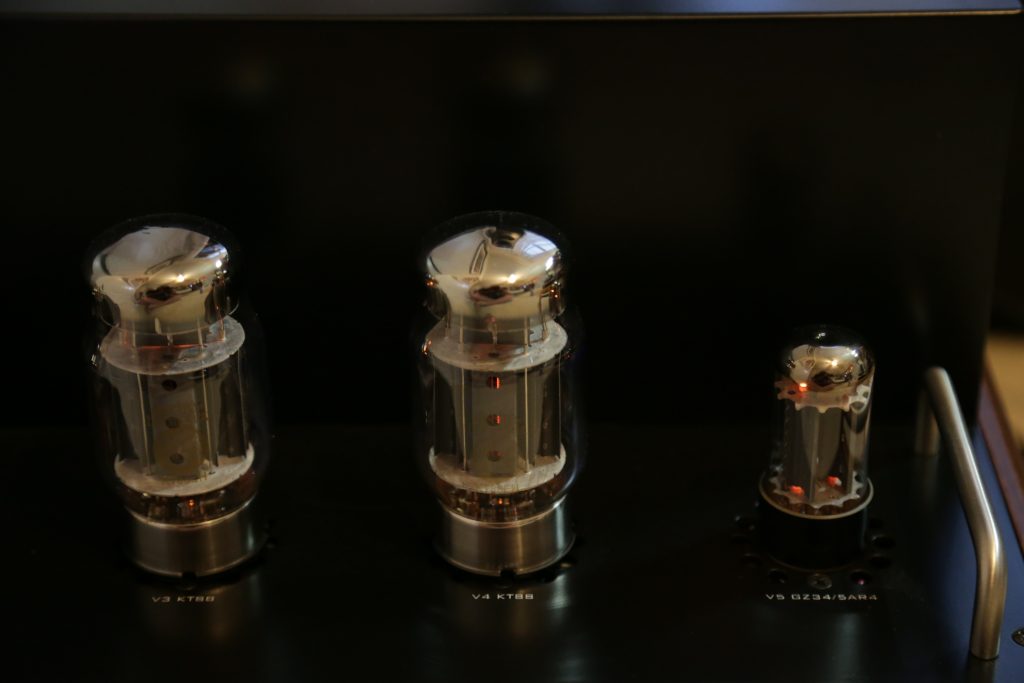
On the back, there are two gauges showing the bias, and per the manual, you want to be around 65mA, which is checked at full temperature at idle with no input. Once your bias is set, you can turn them off, let them cool off too, and then plug in your source and turn up the volume now to the desired point. For placement, these amps are fairly large, so I have them set on the floor in front of their respective speaker, but they do put out some heat, so I opted to place some pucks under them to get about 1-1.25 inches of space under them. I would recommend a pair of amp stands, and if these were to stick around, I would be arranging them in a more permanent home. I do not recommend putting these in an enclosed audio rack, not only for the longevity of the amp, but also because they are too gorgeous to hide. However, regardless of where you put them, you should be ready to flip the rather satisfying power switch on and play your favorite tracks.
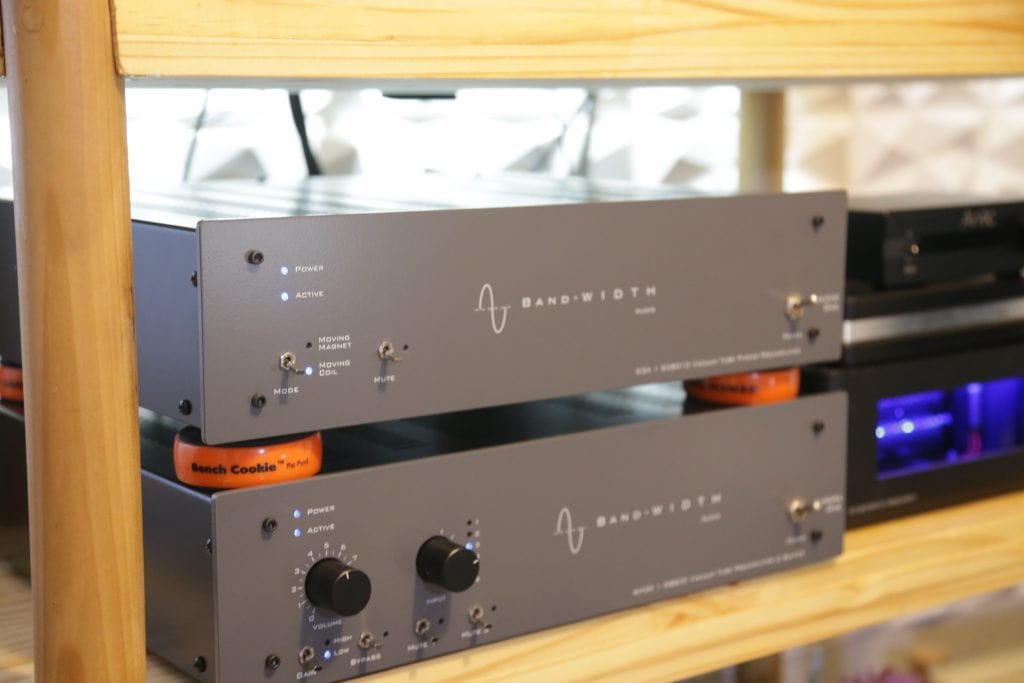
Sound
So, the part we are all here for, how do they sound? Let’s start with how they don’t sound. They don’t hum or buzz, the background is silent, and they don’t break up at even fairly high listening levels. If you have super-efficient speakers, you may hear a slight hum at first, but you can adjust that away, if you hear it at all. I put my ear up to my Sonus Fabers at full volume with nothing playing and heard nothing. So, on to how they do sound, well, long story short, great. They fill the music with volume, not in a sense of loudness but dimension. There is something about a well-executed tube amp that no solid state amp has ever really done for me, the soul of the music just isn’t the same. Now I have heard some incredible solid-state amps, but in general, my favorites tend to be tube amps. Sure, they can be finicky, but their character is so worth it.

I tried the 288 Amps out with all the speakers I have on hand, my Sonus Faber Sonetto V, my Maggie LRS+, and the YG Cairns. I also played them with both my Marantz as the PreAmp and the Bandwidth Aurora 1. As for sources, I used as many as I could, including my VPI Prime, Rotel CD-11, MacBook, and the VPI Forever Model 1.
288s With Sonus Faber Sonetto V
Tube amps love sensitive speakers, typically due to them having lower output than many solid-state amplifiers. The Sonetto V is not a super sensitive speaker at 90dB, though they are not super inefficient either. The 288s have 60 watts on tap, and that is 10 more per channel than my MC250 is rated for, so I wasn’t too worried about output. I was right not to worry, as the 288s had my Sonettos signing up plenty loud for my space and honestly had plenty of headroom to go. Watching the VU meters on the front, I was typically only touching the first half of the meter. A few times, I turned it up more to really get some output, and couldn’t comfortably go above 2/3 of the output. Tonally, the Sonus Fabers are a warmer speaker, and tube amps tend to be warmer as well. At times, the compounding warmth can be too much; I don’t get that with the 288s, even when using the Aurora 1 tube preamp. Instead, what I heard with smooth, detailed music with great depth. Vocals are particularly great with these amps on the Sonetto V, and it led me to spend alot of time listening to indie, folk, and singer-songwriter material. That is not to say I didn’t also listen to music that didn’t play right into their hand, Tha Carter 6 dropped while I had these in for review, and as a long-time Lil Wayne fan, I had to give it a go. The 288s have plenty of weight in the bass and enough speed to keep up with Lil Wayne. Their versatility makes them particularly compelling.
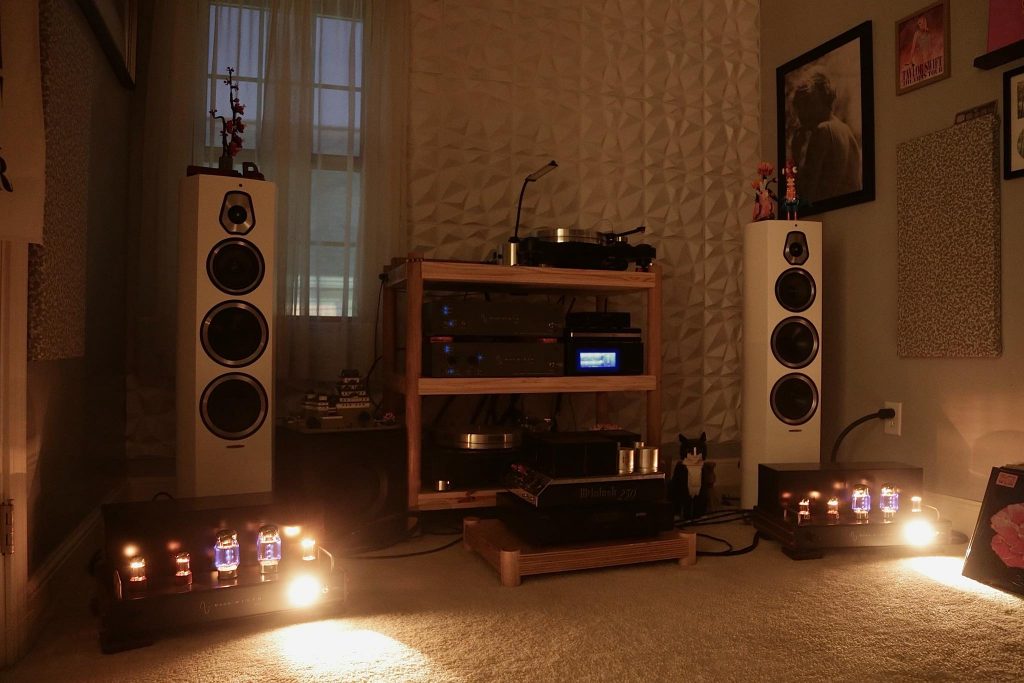
For critical listening, I played Ethel Cain’s album Preachers Daughter. She has an incredibly unique sound and great storytelling ability. The instrumentals set the mood that the lyrics build on, painting the picture. “House in Nebraska” is one of my favorite tracks. It tells a story of love lost, starting with a distant piano behind emotional but airy vocals. When the kick drum comes in and the backing vocals, you get this sense of space. The sound stage is massive, as if I’m listening in a large music hall. On the second chorus, the snare and rhythm section pick up, the sound is something to behold, and the 288s powering my Sonetto V do the track justice. While I love the whole album, I do have my favorites, and “Thoroughfare” is a wonderful song. This track starts off with an acoustic guitar and harmonica behind soft vocals. The song is loaded with transients and layered vocals that can easily get lost, but not with the 288s, even the faintest details are present. On the third chorus, the song opens up, and you get chills, such good songwriting. Every last bit of emotion pours out from the speakers. I couldn’t get enough and played it over and over a few times.
288s with Magnepan LRS+
The LRS+ speakers are certainly brighter and have less low-end than the Sonetto V and can benefit from a bit of controlled warmth. They are also, at least allegedly, power hungry, but I can tell you that isn’t really the full story. I have run the LRS+ plenty loud with as little as 11 watts from a tube amp. What they do like, and really need to sing, is less about watts and more about current. So do the 288s have the power to make the LRS+ Sing?
I played Justin Furstenfeld’s “Songs From an Open Book”, which is a very cool album if you like Blue October. It is the debut solo album from Justin and was recorded with just a single acoustic guitar and his vocals. It is extremely intimate, and also contains some tracks where he is talking live about some of the songs he has written and his life. The sound with the Magnepans was delightful; it doesn’t require a heavy bottom end and lives almost entirely in the mid-range. Both the Magnepans and the 288s really excel in this arena. It sounded as if Furstenfeld was in the room with me. The sense of the space and emotion comes through beautifully. The sort of ancillary sounds of the guitar, the pick hitting the string, and the movement of his hand on the frets are present and contribute to the intimate solo nature of the album, and you need good gear to pick that up. In general, I prefer dynamic box speakers as I am a bit of a bass head, but this combo, similar to the Viva and Maggies, does a lot to pull me into Magnaplanars. The thing is, they offer better micro detail and speed that dynamic drivers have difficulty matching, and when you add in the richness of tubes, the result is something truly special.

I wouldn’t be doing my job if I only played albums that will, in all likelihood, play well in a system. You also have to try to find the weaknesses. I thought what better to do that, than perhaps some System of A Down. It’s hard to have a favorite SOAD album, but like probably many, I think Toxicity is their most solid album and seems to have the best creative cohesiveness or synergy between Serj and Daron. The guitar is tuned in Drop C, allowing some familiar metal rhythms while also being able to get into higher notes still. I’ll start with how impressed I am with LRS+ with this album, but I still recommend a subwoofer to help fill in the kicks and bass lines. The whole system keeps up with the speed and attack throughout the album and doesn’t leave me wanting for more, other than perhaps some of the punch of a conventional driver. But ultimately, the 288’s more than drove the Maggies and had no issue pushing them into the realm of uncomfortably loud, even with the demand of System of A Down. The LRS+ and 288s were the flattest combination, with the tubes taming the sometimes sibilant LRS+. It also had the best clarity of any of the combinations, but I still prefer the character and softness of the Sonus Fabers with the 288. However, if you prefer more sparkle and sharper clarity, this would prove to be a good system for you.
288s with YG Cairn
Angelic, superlative, exceptional. All these adjectives start to come close to describing what I heard through this incredible pairing. These YGs sing beautifully in their own right, and part of me knew this would sound great, but there’s always that possibility that the synergy isn’t there. The Cairn is not what we would typically consider efficient at 86dB, so maybe they wouldn’t be as effortless as a pair of horns, but they are far from straining. This is the best I have heard these speakers; they get plenty loud without audible distortion, with room to keep going. They 288s play so well with the Cairns you’d think this was the intention all along, and I can only imagine how a speaker like the Carmel 3 would sound powered by these amps. The sound stage is massive, and imaging is precise. The micro details in songs like Joe Hisaishi’s “Hand of God” are incredibly clear. The top end is so smooth and light, there is absolutely no harshness at all, you could listen to this for hours on end with no fatigue. The bottom end isn’t quite as good as the Sonetto Vs, but with fewer and smaller drivers, there is only so much physics allows us to do, but I run a subwoofer, and it balances out the frequency range. I just adjusted the crossover to get a better integration. The midrange is where all the magic is; it’s where most of the music lives, and here it is rich, detailed, and elegant. You won’t find yourself wanting to scoop them out with tone controls, nor did I feel as though I needed to bump up the mids.
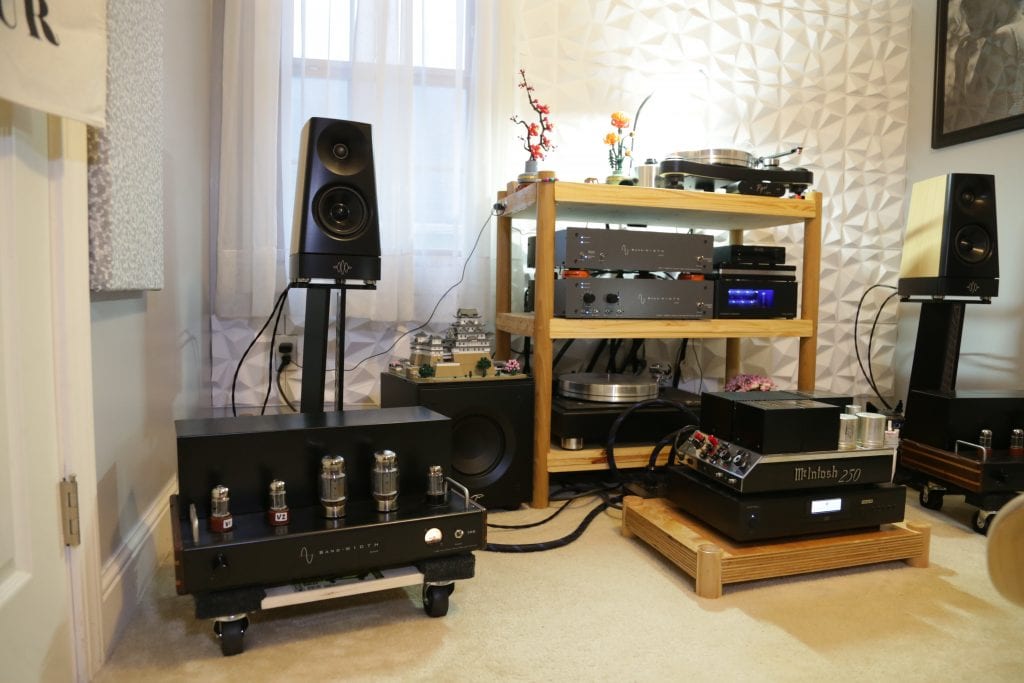
I played Massive Attack’s Mezzanine on. vinyl to get a really good feel of how the system played. It has a wide variety of music on it, plus it’s a great album to listen to, so perfect for testing with. The 288s have great pace, keeping up with the fastest of tracks. They push plenty of power out to keep the YGs controlled and detailed through bass-heavy parts, which keeps the midrange from getting muddied. Extension into the top end has great clarity again without being harsh, cymbal crashes and rides can be fatiguing with some amps and speakers, but this is simply not the case here. The vocals on Mezzanine are certainly conceptually adventurous, and it’s hard to call them lifelike with this pairing, as they simply aren’t lifelike by design on the album. To get a better feel for vocals, I played Laufey’s “Night at the Symphony” (Hollywood Bowl), which is also quite a different sound instrumentally from Massive Attack, which adds perspective as well. Her vocals are delicate and airy, the realism heard through the YGs and 288’s is beyond breathtaking. The orchestral backing has incredible imaging, each instrument placed left to right and back to front, where they should be. Beyond the imaging is the space for each instrument and note to breathe and not be lost in the mix. The speakers disappear in the room, and holographic doesn’t really do the sound justice.
Overall Sound
There wasn’t any type of music that didn’t do well. I listen to loads of different music, and all of it sounds great on the 288s. I think there is music that plays more into their strengths, but certainly nothing that exposes a weakness. They also sound great with a variety of speakers; they aren’t overly warm, so even warmer speakers shouldn’t become too warm, though I haven’t heard every speaker, so I can not guarantee that. And it is to be expected that not every speaker will have the same synergy with any given amp. What I can say is that, be they are larger conventional, smaller 2 ways, or even magneplanar, the amps did wonderfully in my room. I have nothing negative to say about the sound; they are solid amps that tick all the boxes for me. They deliver on detail, richness, and frequency extension. Imaging is precise, and the sound stage has great depth and width.

I think it is important to note that they are not overly warm-sounding. There are many tube amps that lean very hard into the warmth aspect, which makes sense as many listeners look to tubes to provide that. There are others who prefer the richness, but with a more balanced response. These lean more towards balanced with a smooth, rich midrange that offers the hallmarks of tubes without the downside of a loss at the top end.
I tried to compare them to something sonically, and they remind me somewhat of my vintage Mac MC250, while it is solid state, it has a tubey sound to it. But these amps aren’t like anything else I have heard, in a good way. They aren’t too different from the Viva Solistino tonally, but they have a different character to them, perhaps a bit more laid back. They have some classicness to them, but with a modern edge that gives them the heft and speed of many solid-state amps without losing the roundedness of tubes.
Pros and Cons
Pros:
- Good build quality
- Rich but more neutral tone
- Robust and clean power
- Super smooth mid-range
- plenty of low-end punch
- Open, airy top end
- Great industrial design
- Tube Recitified
- Bias gauges for easy adjustment
Cons:
- They are quite large, so that may be an issue for some spaces
- Tubes can be finicky, not specific to this amp, but rather a general observation
Specs:
- Maximum Output Power: 60-Watts RMS
- THD+N at 60-Watts 1KHz: 1.0%
- Full Power Bandwidth (60-Watts): 20Hz – 35KHz at -0.5dB
- THD+N at 1-Watt 1KHz: 0.035%
- Maximum 1W THD + N: <0.45% 20Hz – 200KHz
- 1-Watt Bandwidth: <13Hz – 50KHz at -0.5dB
- Input Voltage for Rated Output: 1.7V RMS
- SNR 1-Watt into 8ohms: 93dB A-Weighted
- SNR 60-Watts into 8ohms: 110dB A-Weighted
- Gain: 22dB
- Negative Feedback (Closed loop only): 15dB
- Input Impedance: 250K ohms
- Speaker Taps: 4, 8 & 16 ohms
- Power Tubes: 2x KT88
- Preamp Tubes: 2x 6SN7
- Rectifier Tube: GZ34
- Power Consumption: 150 Watts
- Dimensions: 20″ x 13″ x 9.5″
Price: $8,199.99 / Pair
Associated Equipment:
- Bandwidth Aurora 1 Preamp
- Marantz SR7009 Preamp
- Bandwidth Kaskode 1 Phono amp
- VPI Avenger Phono
- VPI Prime with 10″ Unipivot arm on VTA base with Ortofon Quintet Red and Shyla Cartridges
- Rotel CD-11
- MacBook Pro with iFi Go Link Max
- Sonus Faber Sonetto V
- YG Cairn
- Magneplanar LRS+
- Paradigm Defiance V8 Sub
- Mcintosh MC 250
- Synergistic Research Powercell 8 SX
- Synergistic Research Foundation SX cabling
- Viborg Power Cables to the amps only (not enough SR on hand)
Conclusion:
What can I say that I haven’t already? The Bandwidth Audio 288 amplifiers are an incredible value proposition in the world of Hifi. I can not think of anything negative to say about the 288s; they are built well, sound incredible, and have loads of power. In a hobby where you can spend hundreds of thousands on amps, to find good tube amps under 10k, let alone tube monoblocks, is tantalizing to say the least. The woodwork and casework are both top-notch, with classic design cues while making room for modern details and features. One of my favorite features is the meters on the back, making setting your bias at home as simple as turning a screw. Having one for each power tube makes monitoring your tube health even easier. The 288 may very well maybe the best pair of monoblock tube amps under 10,000 dollars. Bandwidth Audio needs to be on your radar if you are looking to upgrade your amps or perhaps add something different to your rotation.
For more information about Bandwidth, click the link below



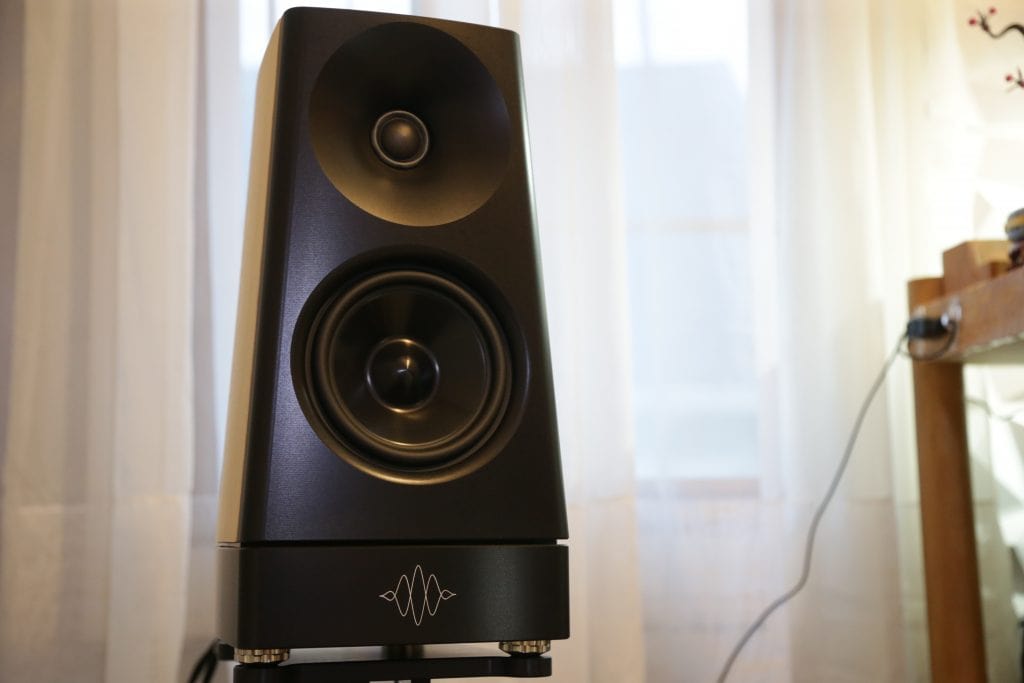





Disclaimer: Bandwidth Audio supplied Hifi Chicken with demo 288 amplifiers for the purpose of this review. Bandwidth Audio nor any affiliate paid in part or in full in exchange for this review.
One thought on “(Reveiw) Bandwidth Audio 288 Monoblocks – Affordable Endgame Tube Amps”